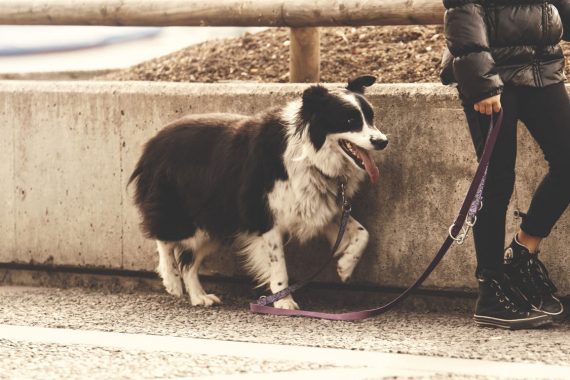How to deal with splinters, thorns and ticks in your dog
 Taking your dog for a walk is not only great exercise for your dog but also has some surprising benefits for you too. Regular dog walks can help you to lose weight, improve your mood, help you to socialise and most importantly will strengthen your bond with your dog.
Taking your dog for a walk is not only great exercise for your dog but also has some surprising benefits for you too. Regular dog walks can help you to lose weight, improve your mood, help you to socialise and most importantly will strengthen your bond with your dog.
However, dog walks – particularly in the autumn and winter – are not without their hazards and things like splinters, thorns and ticks are common occupational hazards.
Just like humans, dogs can pick up splinters, thorns and ticks in their everyday activities. While us humans tend to have our feet guarded by shoes and socks, dogs don’t have the same luxury which makes them even more susceptible. If you notice that your dog has begun to limp, is pawing at its mouth or looks irritated then you should investigate to see if there is a problem.
Here’s what to do if you discover any of these three problems.
How to deal with splinters
If you notice a splinter when inspecting your dog’s skin, then you should help them by removing it quickly. If left to their own devices, the open skin around the splinter can become infected and develop into a much worse problem. If you can see the end of the splinter, then you should use scissors to trim the fur gently around the area so that you can get to it. Now using sterilized tweezers, firmly squeeze together the tweezers on the end of the splinter and swiftly remove it. Now, use an antiseptic wipe or cleaner and sterilize the wound using some cotton wool and clean with warm water.
If the splinter is not sticking out of the skin, then this can be a more difficult procedure. You may need someone to hold your dog still whilst you use a sterile pin or needle to pull at the end of the splinter and pry it up out of the skin so that you can extract it with tweezers. Once you’ve done this you should sterilize the area with antiseptic, warm water and cotton wool.
How to deal with thorns
The process of removing a thorn is quite like that of removing a splinter. Hold your dog still, or ask a friend to do so. Now, using sterile tweezers gently grasp the thorn and wriggle it free. Pay careful attention to pull the thorn at the same angle that it went in to avoid breaking or tearing the skin further. Now bathe the area with clean warm water, antiseptic and cotton wool.
Removing ticks (leave this one to the vets!)
Ticks can be a little trickier to remove than thorns and splinters. This is because they have a habit of leaving bits of themselves inside the animal if pulled. So, if you attempt this by yourself you exacerbate the problem, so take your dog to the vets to have it dealt with correctly.
If you are concerned that you will hurt your dog whilst trying to attempt any of these procedures, then you shouldn’t hesitate about contacting your vet to help. It is much better to do that than to further aggravate a problem and cause more harm to your dog.
For more practical tips on dog training, behaviour therapy and other pet related issues, please visit our articles page which is full of free advice.